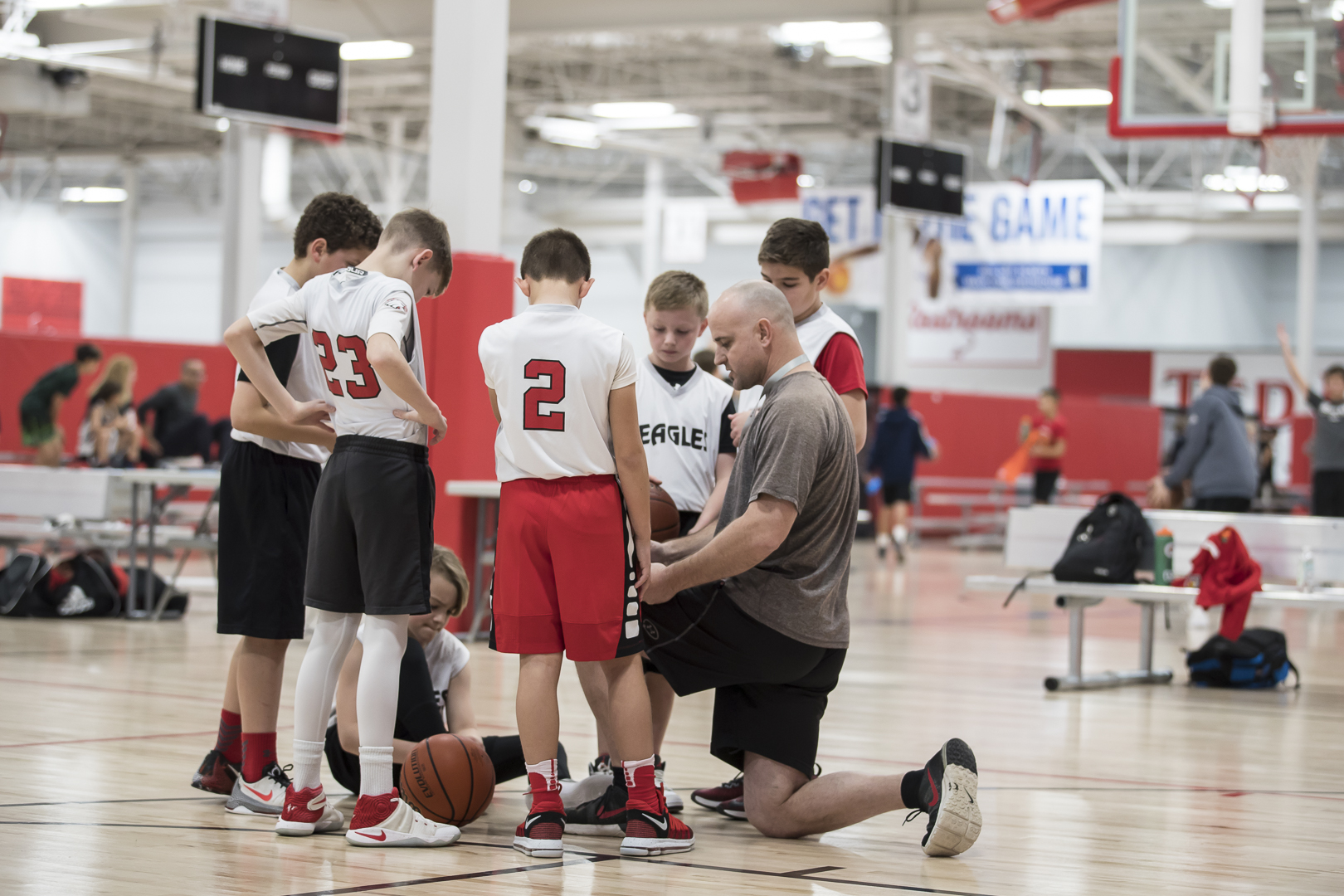Fieldhouse USA’s Quiet Campaign for MVP (Most Valuable Partnership)

30 Sep 2023
Blog, News
It’s hard to put a finger on a single quality that makes Grapevine special, but most people – long-time residents and first-time visitors alike – will list a certain small-town charm as one of their favorite qualities. While the historic nature of the community and a concerted effort to recruit top-notch retail and attractions to the City account for a good portion of that charm, another component is quietly understated: the parks.
Grapevine boasts over 1,600 acres of greenspace that vary in size and shape from sprawling lake parks to pocket playgrounds purpose-built for local residents. The Parks and Recreation Department here in our City is responsible for more than lush lawns and youth sports programs, too: they contribute to festivals, walkable developments, and the lavish Main Street décor that helps us maintain our status as the Christmas Capital of Texas. Counting Part-Time employees, Grapevine’s Parks Department boasts the largest staff in the City; together, they logged just shy of a quarter-million hours in the last fiscal year.
They were also key players in one of the area’s most unique public-private partnerships; a groundbreaking deal that enabled a huge step forward for four different sports programs… by adding a new tenant to Grapevine Mills, the 2-million-square-foot shopping center at the North end of the City.
Overhauling the Retail Roster at Grapevine Mills
The undeniable trend across the country over the last few decades has been a drawdown of brick-and-mortar retail space. While consumer demand for retail products remains .jpeg) high, a convergence of outside factors has shaken up the old model in favor of leaner logistics and meaningful engagement with shoppers. In the midst of this transformation, Simon Property Group re-imagined the shopping center experience at Grapevine Mills by replacing outdated tenants with visionary new users.
high, a convergence of outside factors has shaken up the old model in favor of leaner logistics and meaningful engagement with shoppers. In the midst of this transformation, Simon Property Group re-imagined the shopping center experience at Grapevine Mills by replacing outdated tenants with visionary new users.
“The JC Penny Outlet division wound up closing. That was not indicative of performance here, because they did very well. They just shut down that whole division, which we converted to Fieldhouse USA,” said Mills General Manager Joe Szymaszek. “When you get these unique uses you also have to vet whether or not the use really makes sense. Does it fit what we’re trying to do? Sometimes you swing and you miss, but you’ve got to at least get up to bat and give it a go.”
Swapping a large-footprint retail user for a family-friendly entertainment venue had proven to be an effective strategy once before. Half a decade before the Fieldhouse deal, Simon successfully installed a pair of Merlin Entertainments attractions that continue to draw families into the center today. But Fieldhouse was a different gamble, dependent on more interacting details than a trip to Sealife Aquarium or LEGOland Discovery Center.
Visitors to Fieldhouse would be part of a complex logistical web, scheduled for basketball and volleyball games or tournaments at specific times rather than single-entry family trips. And that’s exactly what the City needed.
“Back in the Day:” How Grapevine Mastered the Fundamentals
Until the mid-2010s, Grapevine Parks and Recreation staff oversaw multiple volleyball and basketball leagues across three seasons. At the height of those programs, Parks Director Chris Smith estimates an average of nearly 500 teams per year: 250 across all age levels during the busy winter season and another 110-120 in the Spring and Fall. Figuring 8-10 players per squad, that’s over 2,000 annual participants, all requiring coaches and facilities for games and weekly practice.
.jpeg) “Back in the day, we would manage three different leagues for basketball and three different leagues for volleyball at three different seasons around the year,” said Smith, a 25-year employee of the City. “It takes a lot of gym space to run that many teams. We had a great partnership with the Grapevine-Colleyville Independent School District (GCISD), and we would work with them, their coaches, and their facility managers to get gym space within their facilities. It typically took about 7 different facilities across GCISD with 14 different gyms to manage that many teams. There’s no single high school or middle school that has fourteen gyms, so you’re spread out across the entire City. Your resources – your part- and full-time staff that manage these leagues – have to be spread out from border to border.”
“Back in the day, we would manage three different leagues for basketball and three different leagues for volleyball at three different seasons around the year,” said Smith, a 25-year employee of the City. “It takes a lot of gym space to run that many teams. We had a great partnership with the Grapevine-Colleyville Independent School District (GCISD), and we would work with them, their coaches, and their facility managers to get gym space within their facilities. It typically took about 7 different facilities across GCISD with 14 different gyms to manage that many teams. There’s no single high school or middle school that has fourteen gyms, so you’re spread out across the entire City. Your resources – your part- and full-time staff that manage these leagues – have to be spread out from border to border.”
The system was far from efficient. GCISD programs could (rightfully) pre-empt recreational uses for gym time, sometimes forcing last-minute cancellations that would cascade through the ranks of volunteers and participants. Every one of those people fell under the jurisdiction of just two full-time staff members, who had to notify everyone and adjust their calendars to avoid losing time.
“That’s a big deal, you know? They need every one of those practices to help those kids gain the knowledge, skills, and ability they need to play the sport,” Smith said. “When the opportunity came along to talk to a group like Fieldhouse, which has a huge facility and plenty of courts – they can take a league on and manage it, all under one roof – the parents knew that if they were scheduled at this date and time, it was going to happen. This is a dedicated facility. It’s going to look good. It’s going to work the right way, from scoreboards to referees. Everything is going to be very consolidated under one roof. It just made a whole lot of sense.”
By letting a professional vendor take over, the Parks Department could simplify the whole process for everyone. And, if that wasn’t enough, the capacity they gained in the process helped to advance another program.
Little Leagues Have a Big Impact
While hardwood sports benefit from clustering under one roof, baseball and softball demand outdoor facilities. The maintenance of those fields already fell to Parks staff, but it wasn’t until Fieldhouse took over the other programs that Smith and his team had the resources necessary to manage all the operations associated with softball and baseball. While it made more sense to place basketball and volleyball in private hands, the City’s other team sports were ready for more public investment.
.jpeg) “The baseball and softball leagues were growing… to a point where those volunteer bases really didn’t have enough resources to manage those leagues in the right way; the safest way with all of the ‘i’s dotted and ‘t’s crossed. There would be holes in schedules, teams that weren’t put in; things like that, which are very hard for volunteers to manage but that we could take over and do. So the right staff, at the right time, was thinking forward enough to think about how we could offload those [volleyball and basketball] programs and still be a part of them, but take on these new programs,” Smith said.
“The baseball and softball leagues were growing… to a point where those volunteer bases really didn’t have enough resources to manage those leagues in the right way; the safest way with all of the ‘i’s dotted and ‘t’s crossed. There would be holes in schedules, teams that weren’t put in; things like that, which are very hard for volunteers to manage but that we could take over and do. So the right staff, at the right time, was thinking forward enough to think about how we could offload those [volleyball and basketball] programs and still be a part of them, but take on these new programs,” Smith said.
“We were in the process of re-doing our Oak Grove softball complex. It went from a three-field complex to a four-field complex with a brand-new concession stand. Brand new operations. I’m really proud of the way that staff was able to take on the opportunity of expanding these leagues, taking on the additional responsibility of the concession stand and really make the leagues go from good and strong – because the youth associations did a great job, those volunteers can’t be thanked enough – to great.”
As strange as it sounds, the joint expansion of those programs has become another driving force in Grapevine’s success. The entire City is built to draw in visitors, whether they be tourists looking for a unique experience or business travelers attending a conference at one of the City’s marquee hotels. Youth sports add another inroad for local and regional travelers, with a recent National Service Research estimating roughly $2.9 million dollars in economic impact generated by a pair of tournaments at Oak Grove Park. According to the study, one in ten participants checked into a Grapevine hotel. Moreover, families spent an average of $53.10 per person in the City during each day of the tournament.
“That’s something we talk about a lot in what we do: the individual benefit and the community benefit, and trying to find the best place to marry both of those,” Smith said. “[These public-private partnerships] allow Parks and Recreation departments across the nation to do as much as they do. You can’t do everything, so you need these partners that are going to help you fill in the gaps.”
If you’re looking for a teammate to help your next venture win big, the City of Grapevine might be right for you! Learn more about our community by exploring the community profile and available property tools here at choosegrapevinetx.com. Or, for more details on this groundbreaking partnership and others like it, check out the ‘Growing Grapevine’ podcast and eNewsletter.
More Topics








